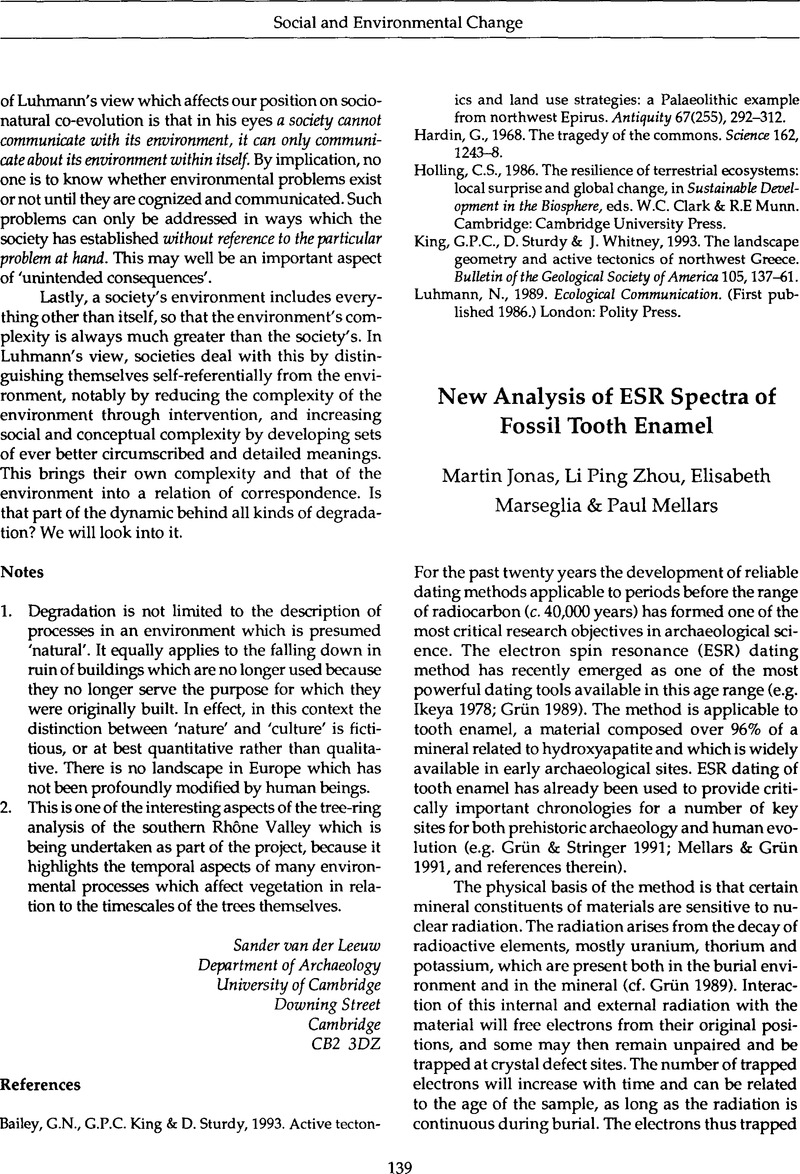Crossref Citations
This article has been cited by the following publications. This list is generated based on data provided by Crossref.
Jonas, Martin
1995.
Spectral deconvolution of the esr dating signal in fossil tooth enamel.
Quaternary Science Reviews,
Vol. 14,
Issue. 4,
p.
431.
Grün, Rainer
and
Jonas, Martin
1996.
Plateau tests and spectrum deconvolution for ESR dose determination in tooth enamel.
Radiation Measurements,
Vol. 26,
Issue. 4,
p.
621.
Grün, Rainer
1996.
Errors in dose assessment introduced by the use of the “linear part” of a saturating dose response curve.
Radiation Measurements,
Vol. 26,
Issue. 2,
p.
297.
Jonas, M
and
Grün, R
1997.
Q-band ESR studies of fossil tooth enamel: Implications for spectrum deconvolution and dating.
Radiation Measurements,
Vol. 27,
Issue. 1,
p.
49.
Grün, R.
Kohno, H.
Tani, A.
Yamanaka, C.
Ikeya, M.
and
Huang, H.P.
1997.
Pulsed ESR measurements on fossil teeth.
Radiation Measurements,
Vol. 27,
Issue. 2,
p.
425.
Rink, W.J
1997.
Electron spin resonance (ESR) dating and ESR applications in quaternary science and archaeometry.
Radiation Measurements,
Vol. 27,
Issue. 5-6,
p.
975.
Jonas, Martin
1997.
Concepts and methods of ESR dating.
Radiation Measurements,
Vol. 27,
Issue. 5-6,
p.
943.
Jonas, Martin
and
Marseglia, Elisabeth
1997.
The case for the use of integrated spectrum deconvolution in ESR dating—a numerically generated example.
Radiation Measurements,
Vol. 27,
Issue. 2,
p.
359.
Grün, Rainer
1998.
Reproducibility measurements for ESR signal intensity and dose determination: high precision but doubtful accuracy.
Radiation Measurements,
Vol. 29,
Issue. 2,
p.
177.
Grün, Rainer
2000.
Methods of dose determination using ESR spectra of tooth enamel.
Radiation Measurements,
Vol. 32,
Issue. 5-6,
p.
767.
Grün, Rainer
2002.
ESR dose estimation on fossil tooth enamel by fitting the natural spectrum into the irradiated spectra.
Radiation Measurements,
Vol. 35,
Issue. 1,
p.
87.
Blackwell, Bonnie A. B.
2002.
Tracking Environmental Change Using Lake Sediments.
Vol. 1,
Issue. ,
p.
283.


